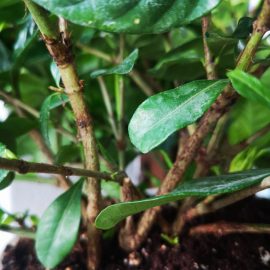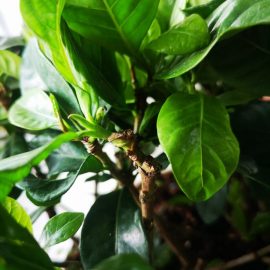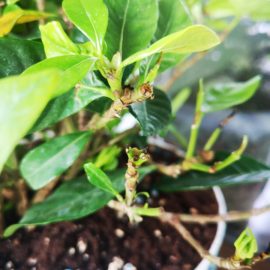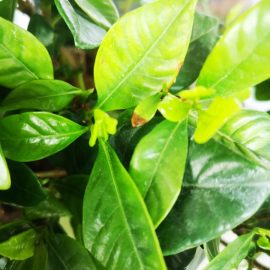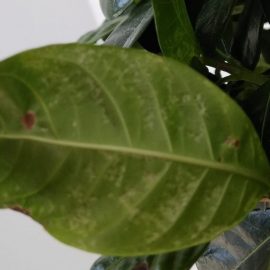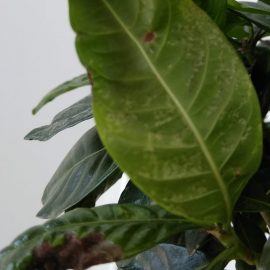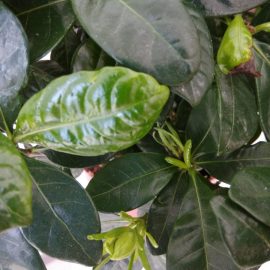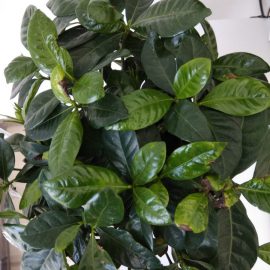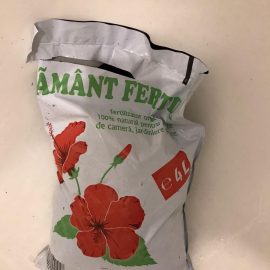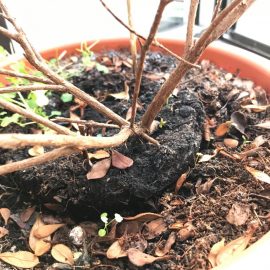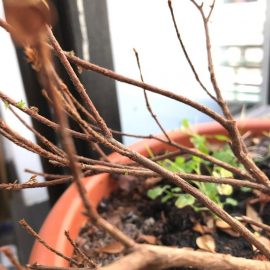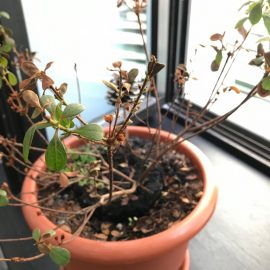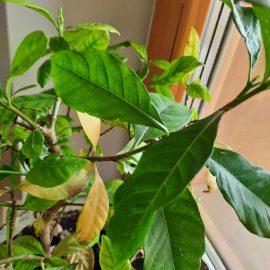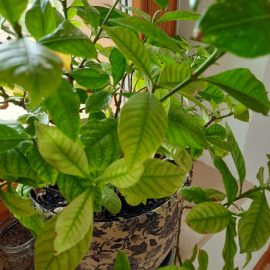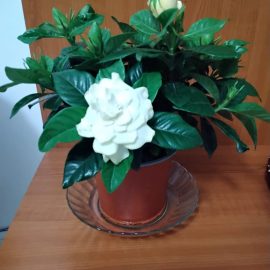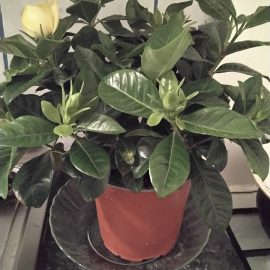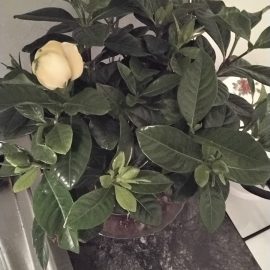Gardenia, plant care and growing guide
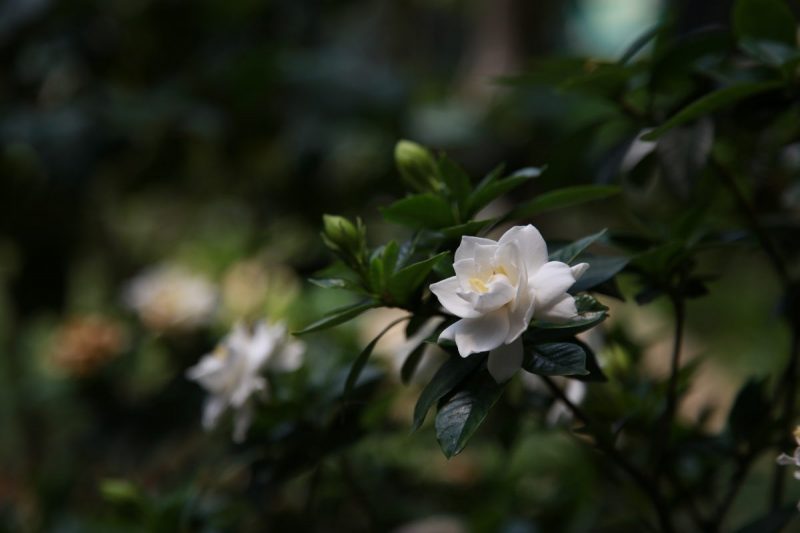
Gardenia is a genus of shrubby, flowering plants in the coffee tree family (Rubiaceae). They originate from the tropical and subtropical regions of Africa, Asia, and Oceania. It grows in the form of shrubs or evergreen trees, with a height between 1 and 15 meters. The leaves are long (8-12 cm), arranged opposite to each other, elliptical, dark green, and glossy. It blooms from May to November. The flowers are solitary or arranged in bunches, they are semi-double or double, with white or cream-yellow petals.
Species
The genus includes about 200 species, of which the most common are:
Gardenia jasminoides, or common gardenia, is the best-known species of this genus, grown as an indoor plant for its white, double flowers. It can reach a height of 60 cm.
Gardenia taitensis also called “the tiaré flower”, is unique thanks to its specific form resembling a tiara and it has white, fragrant flowers. It is the national flower of Polynesia.
Gardenia thunbergia looks like a dense shrub, with long green leaves and abundant cream-colored flowers.
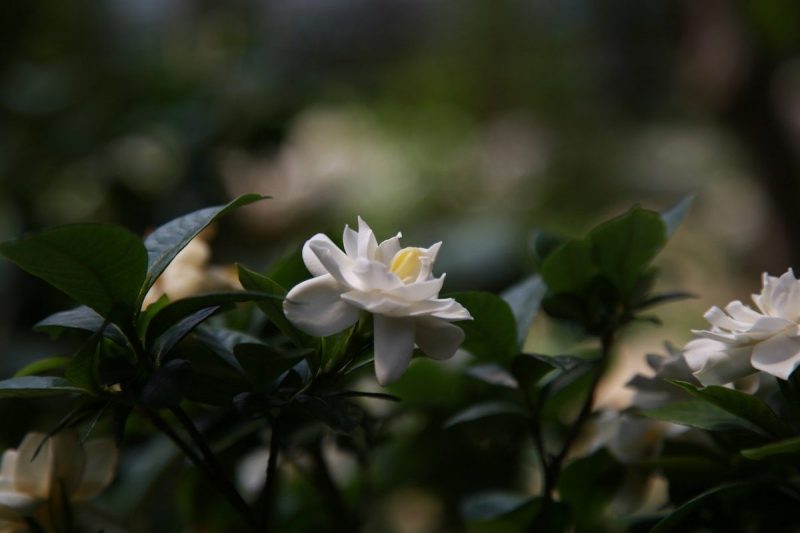
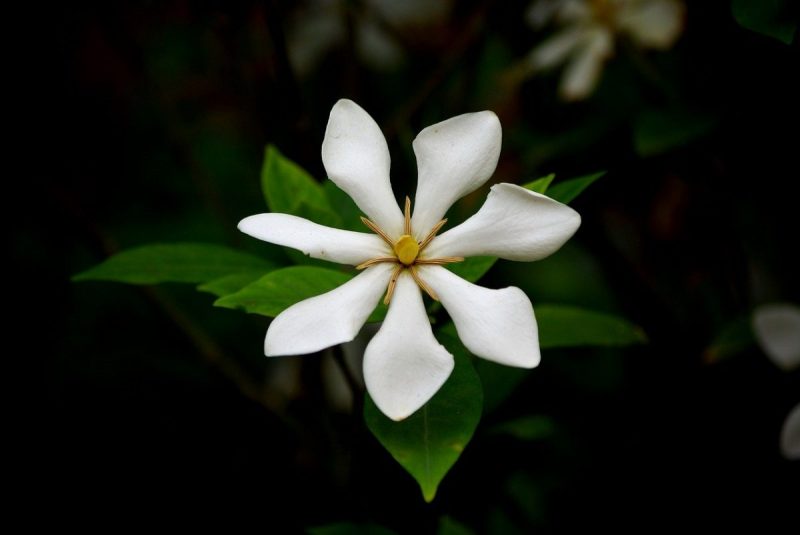
Environmental conditions
Light. Gardenia prefers strong light, but it must be protected from direct sunlight, especially in the hot summer months. If it is kept in too much shade, its growth might be slowed down. For optimal development, Gardenia needs light in the early hours of the day and partial shade in the afternoon.
Temperature. It needs a warm environment, with optimal temperatures of 23-25º C during the summer. In winter it can withstand temperatures of a minimum of 10-15º C. A constant temperature must be ensured because Gardenia does not tolerate sudden temperature variations.
Humidity. It does not tolerate dry air in the room and needs a humidity of over 60%. To ensure the necessary humidity, spray the leaves with non-calcareous water or place the pot on a bowl with damp gravel. The flowers should not be sprayed with water, as they might wilt.
Substrate. It can be made of peat, Ericaceae soil, or leaf manure and must have a slightly acidic pH, between 5 and 6. A more alkaline substrate can affect it quite a lot, even leading to plant death. It is also recommended to add some organic fertilizer or humus to the soil mix.
Recommended products
-
You can find products on a different store
Change Store -
You can find products on a different store
Change Store -
You can find products on a different store
Change Store -
You can find products on a different store
Change Store -
You can find products on a different store
Change Store -
You can find products on a different store
Change Store -
You can find products on a different store
Change Store -
You can find products on a different store
Change Store -
You can find products on a different store
Change Store -
You can find products on a different store
Change Store -
You can find products on a different store
Change Store -
You can find products on a different store
Change Store -
You can find products on a different store
Change Store -
You can find products on a different store
Change Store -
You can find products on a different store
Change Store -
You can find products on a different store
Change Store -
You can find products on a different store
Change Store -
You can find products on a different store
Change Store -
You can find products on a different store
Change Store -
You can find products on a different store
Change Store -
You can find products on a different store
Change Store -
You can find products on a different store
Change Store -
You can find products on a different store
Change Store -
You can find products on a different store
Change Store
Watering
Watering should be done moderately, with not too large amounts of water, so that the soil stays moist, but not too wet. In winter, watering should be done less often, leaving the surface of the substrate to dry before watering the plant again. The water used must be at room temperature and should be softened beforehand, so as to not increase the pH of the substrate.
Fertilization
It should be done with a liquid fertilizer that must also contain iron.
Recommended products
-
You can find products on a different store
Change Store -
You can find products on a different store
Change Store -
You can find products on a different store
Change Store -
You can find products on a different store
Change Store -
You can find products on a different store
Change Store -
You can find products on a different store
Change Store -
You can find products on a different store
Change Store -
You can find products on a different store
Change Store -
You can find products on a different store
Change Store -
You can find products on a different store
Change Store -
You can find products on a different store
Change Store -
You can find products on a different store
Change Store -
You can find products on a different store
Change Store -
You can find products on a different store
Change Store -
You can find products on a different store
Change Store -
You can find products on a different store
Change Store -
You can find products on a different store
Change Store -
You can find products on a different store
Change Store -
You can find products on a different store
Change Store -
You can find products on a different store
Change Store -
You can find products on a different store
Change Store -
You can find products on a different store
Change Store -
You can find products on a different store
Change Store -
You can find products on a different store
Change Store
Repotting
It should be done every year, in autumn, after the flowers have fallen, in a larger pot. The plant must be moved carefully so as to not damage its roots (the injured ones must be removed).
Propagation
Propagation is done through cuttings harvested from semi-lignified stems, between July and September. It is recommended to use rooting stimulators and keep the seedlings planted in mini-greenhouses, in a special substrate, at temperatures of approximately 30° C.
Recommended products
-
You can find products on a different store
Change Store -
You can find products on a different store
Change Store -
You can find products on a different store
Change Store -
You can find products on a different store
Change Store -
You can find products on a different store
Change Store -
You can find products on a different store
Change Store -
You can find products on a different store
Change Store -
You can find products on a different store
Change Store -
You can find products on a different store
Change Store -
You can find products on a different store
Change Store -
You can find products on a different store
Change Store -
You can find products on a different store
Change Store -
You can find products on a different store
Change Store -
You can find products on a different store
Change Store -
You can find products on a different store
Change Store -
You can find products on a different store
Change Store -
You can find products on a different store
Change Store -
You can find products on a different store
Change Store -
You can find products on a different store
Change Store -
You can find products on a different store
Change Store -
You can find products on a different store
Change Store -
You can find products on a different store
Change Store -
You can find products on a different store
Change Store -
You can find products on a different store
Change Store
Recommended products
-
You can find products on a different store
Change Store -
You can find products on a different store
Change Store -
You can find products on a different store
Change Store -
You can find products on a different store
Change Store -
You can find products on a different store
Change Store -
You can find products on a different store
Change Store -
You can find products on a different store
Change Store -
You can find products on a different store
Change Store -
You can find products on a different store
Change Store -
You can find products on a different store
Change Store -
You can find products on a different store
Change Store -
You can find products on a different store
Change Store -
You can find products on a different store
Change Store -
You can find products on a different store
Change Store -
You can find products on a different store
Change Store -
You can find products on a different store
Change Store -
You can find products on a different store
Change Store -
You can find products on a different store
Change Store -
You can find products on a different store
Change Store -
You can find products on a different store
Change Store -
You can find products on a different store
Change Store -
You can find products on a different store
Change Store -
You can find products on a different store
Change Store -
You can find products on a different store
Change Store
Pests and Diseases
Sometimes, aphids, mealybugs, and mites can infest the plant.
Recommended products
-
You can find products on a different store
Change Store -
You can find products on a different store
Change Store -
You can find products on a different store
Change Store -
You can find products on a different store
Change Store -
You can find products on a different store
Change Store -
You can find products on a different store
Change Store -
You can find products on a different store
Change Store -
You can find products on a different store
Change Store -
You can find products on a different store
Change Store -
You can find products on a different store
Change Store -
You can find products on a different store
Change Store -
You can find products on a different store
Change Store -
You can find products on a different store
Change Store -
You can find products on a different store
Change Store -
You can find products on a different store
Change Store -
You can find products on a different store
Change Store -
You can find products on a different store
Change Store -
You can find products on a different store
Change Store -
You can find products on a different store
Change Store -
You can find products on a different store
Change Store -
You can find products on a different store
Change Store -
You can find products on a different store
Change Store -
You can find products on a different store
Change Store -
You can find products on a different store
Change Store
In addition:
- leaves yellowing or discoloration can be caused by a high pH of the substrate or by an iron deficiency. These problems can be corrected by using liquid fertilizers, based on chelated iron.
- it is not suitable for pots in which water stagnates.
- gardenia cannot withstand drafts well.
- it needs a period of dormancy in winter, to bloom abundantly in the following months.
- dry air can cause leaf drop.
- excessive humidity can cause bud drop.














































































































































































































































































































































































































































